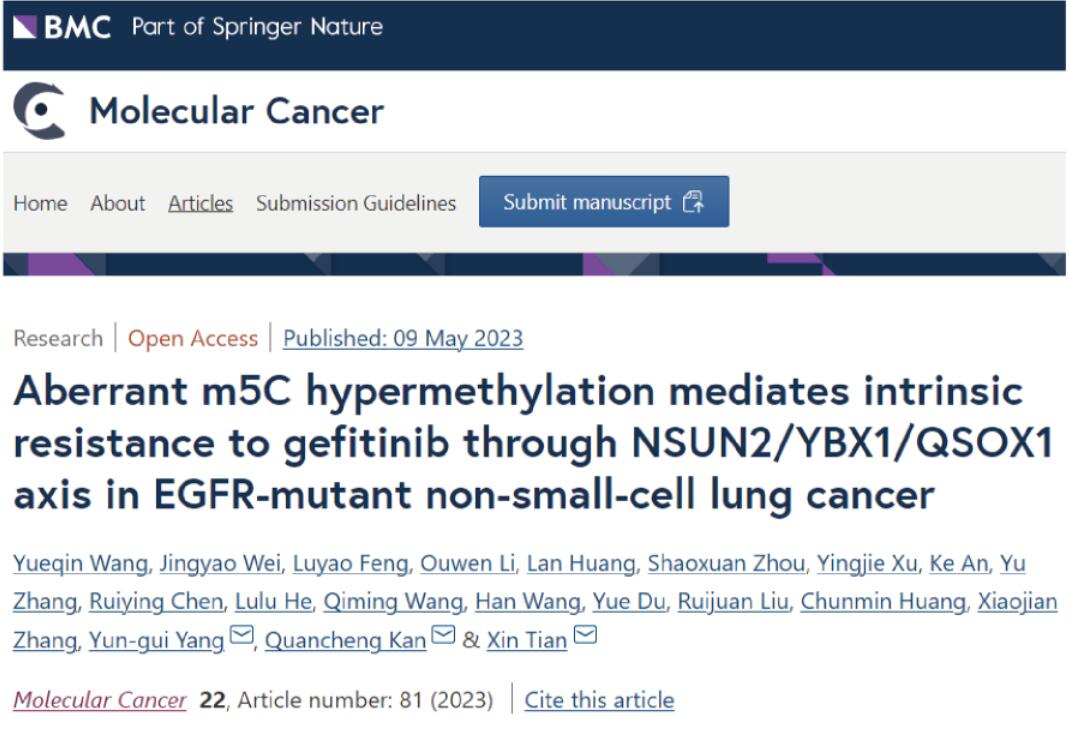Aberrant m5C hypermethylation mediates intrinsic resistance to gefitinib through NSUN2/YBX1/QSOX1 axis in EGFR-mutant non-small-cell lung cancer

Background: RNA 5-methylcytosine (m5C) modification plays critical roles in the pathogenesis of various tumors. However, the function and molecular mechanism of RNA m5C modification in tumor drug resistance remain unclear.
Methods: The correlation between RNA m5C methylation, m5C writer NOP2/Sun RNA methyltransferase family member 2 (NSUN2) and EGFR-TKIs resistance was determined in non-small-cell lung Cancer (NSCLC) cell lines and patient samples. The effects of NSUN2 on EGFR-TKIs resistance were investigated by gain- and loss-of-function assays in vitro and in vivo. RNA-sequencing (RNA-seq), RNA bisulfite sequencing (RNA-BisSeq) and m5C methylated RNA immunoprecipitation-qPCR (MeRIP-qPCR) were performed to identify the target gene of NSUN2 involved in EGFR-TKIs resistance. Furthermore, the regulatory mechanism of NSUN2 modulating the target gene expression was investigated by functional rescue and puromycin incorporation assays.
Results: RNA m5C hypermethylation and NSUN2 were significantly correlated with intrinsic resistance to EGFR-TKIs. Overexpression of NSUN2 resulted in gefitinib resistance and tumor recurrence, while genetic inhibition of NSUN2 led to tumor regression and overcame intrinsic resistance to gefitinib in vitro and in vivo. Integrated RNA-seq and m5C-BisSeq analyses identified quiescin sulfhydryl oxidase 1 (QSOX1) as a potential target of aberrant m5C modification. NSUN2 methylated QSOX1 coding sequence region, leading to enhanced QSOX1 translation through m5C reader Y-box binding protein 1 (YBX1).

